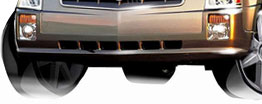Articles
The History Of The Porsche
Ferdinand Porsche played an important role in the development of airplanes and racing cars, and the construction of tanks for the Wehrmacht. He is an automobile engineer with more than a thousand patents to his name. He was appointed chief engineer at Mercedes-Benz in Stuttgart in the 1920s. Later on, he set up his own engineering workshop and designed among others the Volkswagen.
At the plant where Volkswagen was made, Wolfsburg, he was chief of operations and at the end of the war he was interned by the Allies. He was released a few years later and started building his first car with his son, Ferry Porsche. The car was named the Porsche 356 and it was a sports car and a reminiscent of the Volkswagen. It had the same four-cylinder boxer engine that was rear-mounted, just like the VW. It was far from being a powerful sports car, developing only 40 bhp and a maximum speed of 87 mph (140 km/h). First produced as a convertible and later as a hard top it distinguished by the very elegant and innovative body.
It was developed in the workshop of Erwin Komenda, a master of restrained streamlining who had been in charge of sheet metal and design techniques at Porsche since the VW Beetle. The new style of closed coupe was designed by Komenda and it soon became the embodiment of the sports car, thanks to its fastback. This tradition was continued by Komenda and Ferdinand "Butzi" Porsche, the founder's grandson, with the 911. The 911 became easily recognizable: it had attractive sloping bonnet and what later became characteristic "frog eye" headlights, curves running from the top edge of the windscreen to the rear bumper and a straight waistline.
From a functional and technical point of view it was more like BMW 1500, although it retained the stylistic features of the original Porsche. The new 911 will become the foundation stone of Porsche's identity, even though the design was not always appreciated. During the 1970`s and 1980`s, the designers attempts to distance Porsche from its legendary design brought the company to the edge of disaster. The more modern 924 model, "a people's Porsche", developed with Volkswagen, as well as the 928 were far from fulfilling the expectations. In the 1990`s, the company realized that what for over twenty years was perceived as a straitjacket, it was in fact a market advantage.
During the 1990`s, Porsche became highly profitable since they now knew that the typical Porsche features were timeless. Nearly forty people now worked in the design department on further developments of the long-running 911. These developments included the 911 GTI, a powerful combination of sports and racing car, put forward by the in-house designer Anthony R. Hatter. In 1999, chief designer proudly presented the new Boxster which enabled Porshe to establish a second independent range of models.
Having spent months of research on different subjects, for independant companies, Andrew Manifield has decided to publish his articles on many subjects at his own website, visit to learn more. http://www.qualified-publishing.co.uk/porsche
Car Rentals
Fuel Prices Skyrocket But SUV Sales Remain High - Wind would certainly think we feel prices as high as they are that fewer people would be buying large minivans or SUVs.
Towing Tips After An Accident - It is best to prepare for an auto accident before it ever happens.
Not Your Daddys Diesel Your Grandpas Biodiesel - Tired of high gas prices? Want to save the earth? Want to support local economies and clean the air while getting high performance out of your vehicle? Try Biodiesel.
The United States Will Die Without Oil or Gasoline for Cars - Many actually believe that the United States of America will die on the vine without oil and that if the oil prices continue to climb that we will all go broke because we cannot buy fuel for our cars and all the cars will stop? Don?t we wish; as i.
When Braking Your Car Is Hard To Do - Losing control of your car and losing the function of your breaks could actually happen in real life not just in movies and soap operas.
more...



